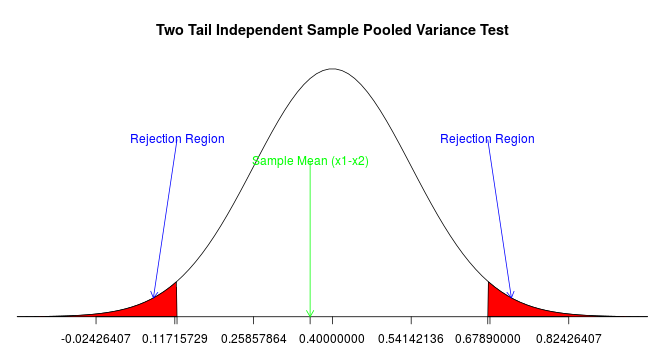9.2 Terminology
Null and Alternative
The null hypothesis (\(H_{0}\)) always contains an equality, and is the one you are trying to refute. The alternative (research) hypothesis (\(H_1\)) never contains an equality, and is the one you are trying to confirm.T hese two hypotheses are stated so that they are mutually exclusive and collectively exhaustive. Mutually exclusive means that if one is true, the other must be false, and vice versa. Collectively exhaustive means that at least one of the outcomes must occur8.
Types of errors
When performing such tests, there is some chance that we will reach the wrong conclusion. There are two types of errors:
- Type I : \(H_0\) is rejected even though it is true (false positive)
- Type II : \(H_0\) is not rejected even though it is false (false negative)
The acceptable level of a Type I error is designated by alpha (\(\alpha\)), while the acceptable level of a Type II error is designated beta (\(\beta\)).
Significance level (\(\alpha\))
By definition, the \(\alpha\) level is the probability of rejecting the null hypothesis when the null hypothesis is true. Most commonly, \(\alpha\) is set at \(0.05\), although any other values (between 0 and 1, exclusive) can be used instead. Other commonly used alpha values include 0.01 and 0.10.
In other words, significance level, denoted \(\alpha\), is the acceptable level of type I error. If \(\alpha = 0.05\) it means that we are willing to tolerate up to 5% of type I errors, i.e. we are willing to accept the fact that in 1 out of every 20 samples we reject the null hypothesis even though it is true.
\(p-\)value
P-value (the probability value) is the value p of the statistic used to test the null hypothesis. If \(p < \alpha\) then we reject the null hypothesis.
Critical region
Critical region is the part of the sample space that corresponds to the rejection of the null hypothesis, i.e. the set of possible values of the test statistic which are better explained by the alternative hypothesis. The significance level is the probability that the test statistic will fall within the critical region when the null hypothesis is assumed.
Right-tailed hypothesis
\(H_0: \mu \leq 20\)
\(H_1: \mu > 20\)

Left-tailed hypothesis
\(H_0: \mu \geq 20\)
\(H_1: \mu < 20\)

Two-tailed hypothesis
\(H_0: \mu = 20\)
\(H_1: \mu \neq 20\)

- Statistical significance is the likelihood that a relationship between two or more variables is caused by something other than chance.
- Statistical significance is used to provide evidence concerning the plausibility of the null hypothesis, which hypothesizes that there is nothing more than random chance at work in the data.
- Statistical hypothesis testing is used to determine whether the result of a data set is statistically significant.
From here
You can use the app Statistics 201 - Inference to know more about hypothesis testing.
